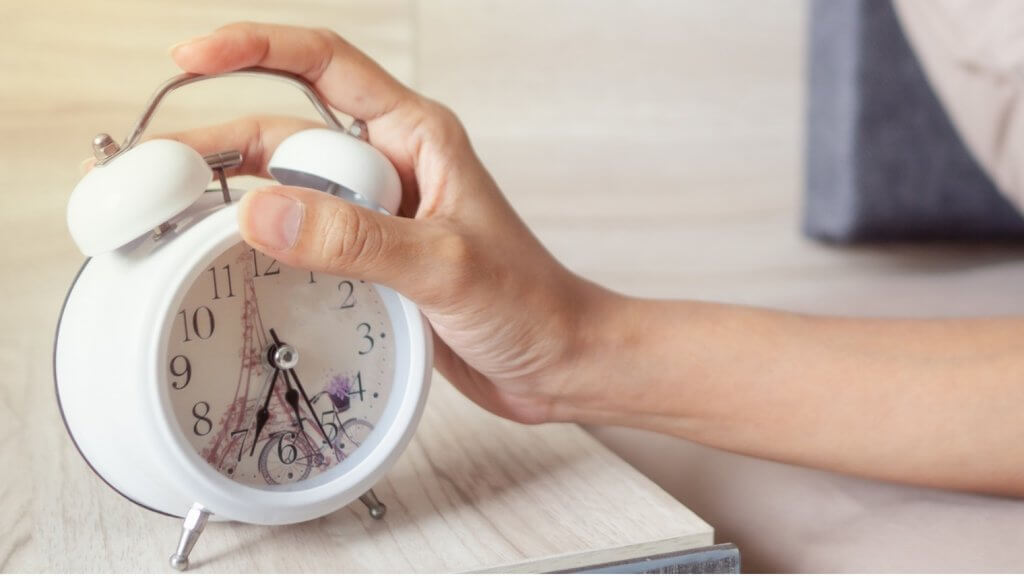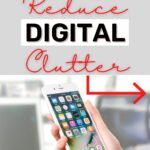Inside: Tired of feeling chained to technology? Learn ways to incorporate digital minimalism into your life.
A guest post by Emma Scheib of Simple Slow & Lovely
When I first heard about minimalism I naively thought it was solely about my physical stuff. The clutter in my kitchen drawers and the ten t-shirts I never wore.
I had no idea that there was so much invisible clutter that I’d need to sort through too. No idea that what I also needed was digital minimalism.
After reading about the rise of the diagnosis of ADD (attention deficit disorder) in adults, I was pretty horrified to be able to tick yes to most of the symptoms.
Easily distracted? Tick. Difficulty staying on task? Tick. Forgetfulness? Tick. Short attention span, losing personal items, and problems staying organized? Yes. To all of them.
It’s embarrassing to admit, but most days I struggle to stay on one task for longer than five minutes. Particularly if it’s a task at my computer.
When I think about it, I actually feel like I am the computer, with dozens of tabs open all at once. I flick between them, trying to grab onto something but usually just flailing between multiple tabs all day.
Although things like mindfulness activities help with these symptoms, they are not making a big enough difference.
I need more. I need digital minimalism.

How to get started with digital minimalism
1. Unsubscribe to everything you don’t use
Take stock of all the apps that are cluttering up your phone. Uninstall any you don’t use and set a calendar reminder to do this task again in 3 months. Reducing digital clutter will help you clear your mind and save you time.
If it takes you more than a few minutes to pick which movie or show you want to watch you probably have too many streaming services. Pick the one or two you use the most and unsubscribe to everything else.
2. Unfollow and unfriend
However we feel about it, social media is here to stay. But you can exercise some autonomy and curate your feeds. Unfriend or unfollow any people, pages, or accounts that you don’t interact with or like.
Let go of the idea that you have to keep up (or worse yet, compare yourself) with everybody else’s lives. Your own life will get much simpler when you can do this.
3. Use your phone, as a phone.
Your phone has the ability to be everything to you. Your watch, your calendar, your camera, your notepad, and a hundred other things. Our reliance on this tiny computer is all-consuming.
Brainstorm ways you can reduce your reliance on it. Sit at your computer to work. Wear a watch, write with a pen and paper.

4. Live offline
Take a day offline a week or a weekend off a month. Delete some apps (like Facebook) off your phone for a period of time. Or maybe without the internet at all. If you are really game, go without screens entirely.
Make it a regular practice and get your family on board. You’ll likely return from any form or length of a digital break feeling much lighter and more focused.
5. Simplify your responses
I’m fairly well known among family and friends for not responding to texts. Why? Because it’s exhausting.
I found myself with a constant mental list of all the people I needed to respond to. I would forget and then feel guilty.
And then I realized, not everything needs a response. Many things don’t. I practice digital minimalism by responding in my own time and only if a response is really required. It might sound ruthless, but it works, and I’m better off for it.
6. Read a newspaper
Disclosure: As an Amazon Associate I earn from qualifying purchases. Please note that I only recommend products I use and love. Click here to read my full disclosure policy.
Many of us turn to our phones to get the latest news. It’s more convenient than buying and reading a newspaper.
In Johann Hari’s book, Stolen Focus, he describes how detrimental this convenience was to his mental health. Being able to check multiple news feeds every hour or so induced panic and anxiety in him.
Switching to reading the news once a day, a newspaper every morning, meant he had more time to tend to other things, and less opportunity to be distracted.
For further insights on this topic, check out Cal Newport’s book titled, Digital Minimalism.

7. Sleep tech-free
Technology is hurting our sleep. The simplest answer is to make it unavailable during the night and at least an hour before bed.
Read an actual book or magazine in bed. Buy a basic alarm clock. Use an ipod if you like to listen to music or a podcast at bedtime.
8. Buy a camera
Even though we take most of our photos on our phones these days, we have kept our old camera. We want the option of using it on family outings where we don’t want to be distracted by the constant barrage of other things trying to steal our attention.
I want to capture moments with my family and not feel the pressure to share them immediately on Instagram. This is so much easier when the photos are captured on an old-fashioned camera.
9. Take up a hobby
Scrolling isn’t a hobby, right? If I hit a nerve, you aren’t alone. I will absolutely put my hand up for this.
I will admit that I still spend an hour or so every day scrolling through my phone. Some of it is intentional, some of it is ‘accidental’, meaning I wasn’t careful enough and my attention got stolen.
I’ve found more success in replacing this ‘hobby’ with something else rather than trying to resist it.
I recently started to learn taxidermy, so at least a couple of nights a week I can be found playing with this, instead of my phone.

10. Turn off all notifications
A quick count revealed that I have 26 notifications enabled on my phone. A long time ago I stopped social media and email notifications and yet there are still more than ping and vie for my attention.
I have disabled all but text messages and an app my daughter’s school uses to contact us.
I’m tired of not being able to focus. And tired of feeling like the world wide web is constantly yelling at me, trying (and usually succeeding) at pulling me away from my actual life.
I’m ready to dig my heels in and say no to the internet and yes to digital minimalism.
Together, let’s become the generation who learned how to use technology in minimal but purposeful ways, and live in the big wide world.

Emma Scheib is a mom, writer, and lover of all things slow and simple. Her blog, Simple Slow & Lovely, helps people live a slower, simpler, and intentional life, based on their values. Connect with her on Facebook & Instagram.
Which digital minimalism tip do plan to try first? Share it in the comments section.
Sign up on the form below to get weekly simplifying and decluttering tips sent straight to your inbox. You’ll also get the free 8 Quick Wins for Decluttering to help you start simplifying right away!


I keep saying I will unsubscribe from all the emails I get that I don’t want. I spend a lot of time everyday going down the list and checking boxes to put them in the trash. I am going to take the time to unsubscribe to free up my time daily. All the stores I don’t need ads from that tempt me to buy things I don’t need. I decluttered my house and now I need to declutter my digital. I’m old so I have never used the Iphone like a digital assistance, just as a phone. Probably a waste of money but now that I have it, I might as well use it as a phone. The map app is the one help I get from it that actually helps me.
I recently acquired my first smart phone. I had used a flip phone for years, only to text and actually call people. So, the new smart phone seemed like a deal. It was free from my provider, and I thought I would enjoy having the additional functionality. Wrong! It would turn off if I hesitated more than a few seconds; I had to enter passwords for the simplest things; the terminology baffled me; and it would ping notifications I had no idea how to find. So I have made a deal with myself. I will use it like I used my old flip phone – for calls and texts. Maybe the map or to check the weather. Otherwise, I will use my desktop computer. I buy usage time for 3 months at a price of $20 with a fee of 75 cents at the grocery store. I do not shop on it, so there is no fear of having a credit card number stolen. It has relieved a lot of needless stress. Hm… I might use the camera occasionally too.